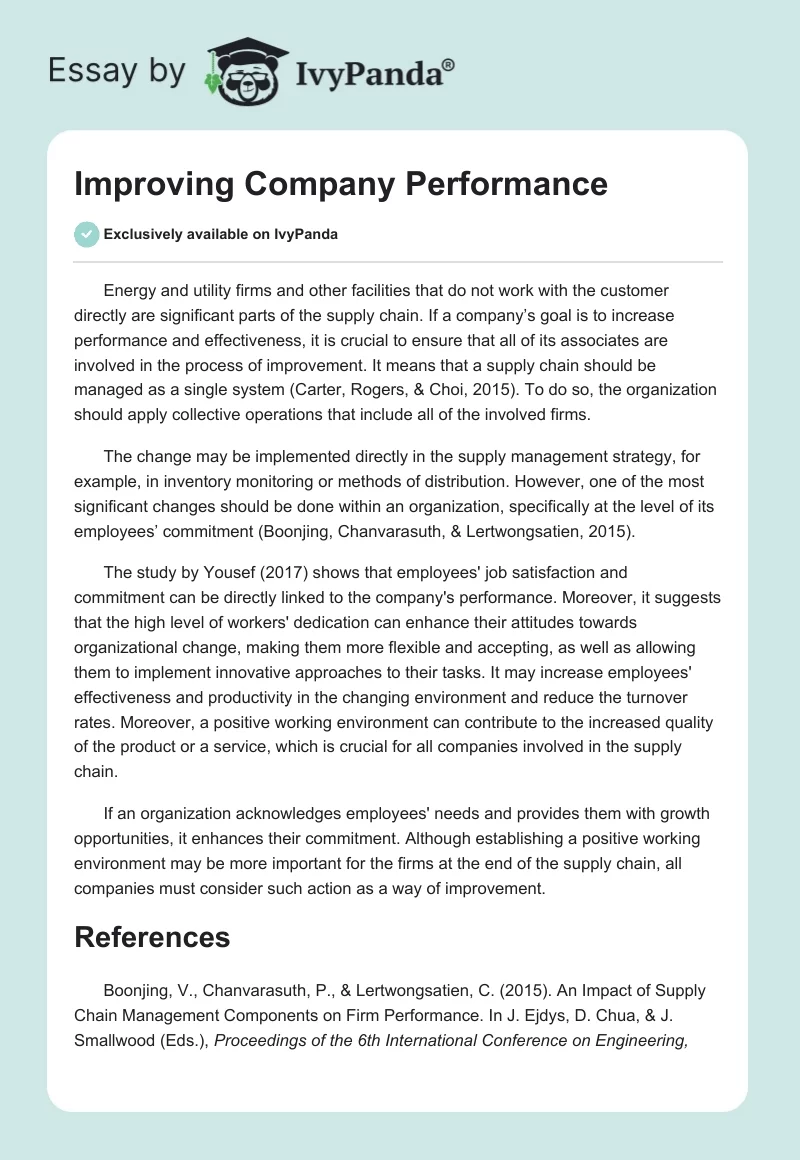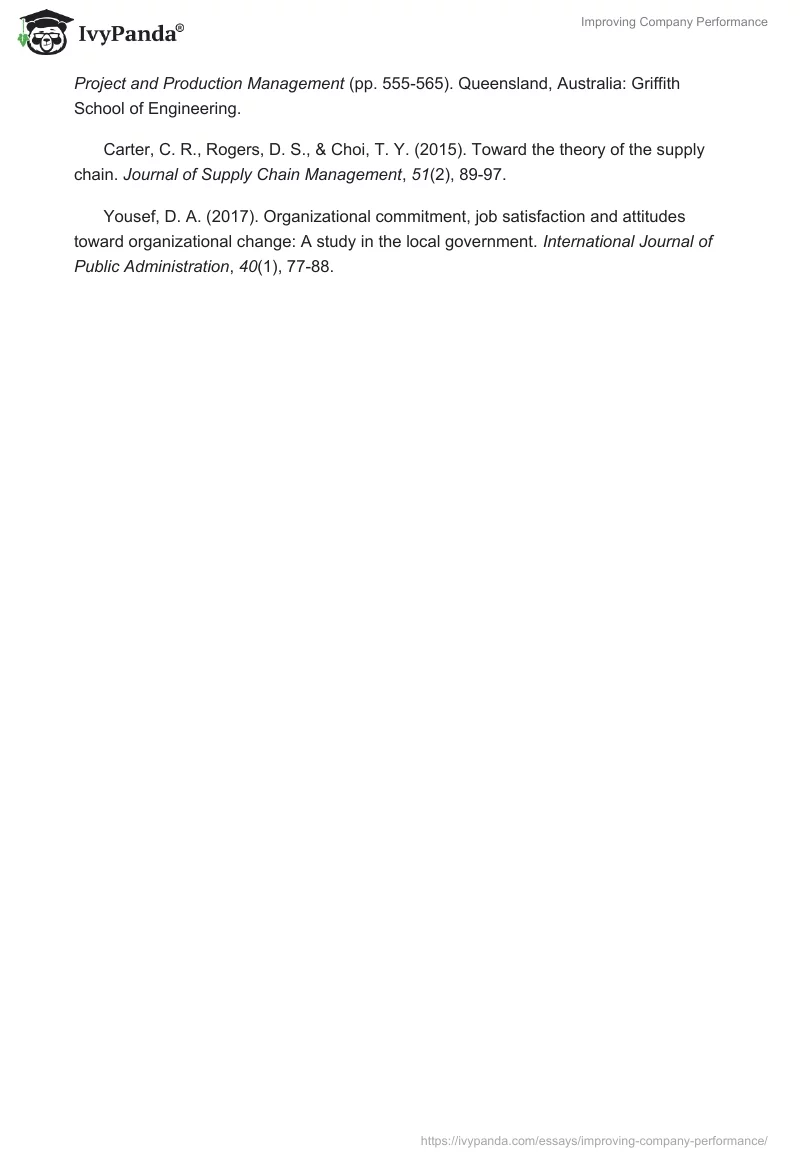Energy and utility firms and other facilities that do not work with the customer directly are significant parts of the supply chain. If a company’s goal is to increase performance and effectiveness, it is crucial to ensure that all of its associates are involved in the process of improvement. It means that a supply chain should be managed as a single system (Carter, Rogers, & Choi, 2015). To do so, the organization should apply collective operations that include all of the involved firms.
The change may be implemented directly in the supply management strategy, for example, in inventory monitoring or methods of distribution. However, one of the most significant changes should be done within an organization, specifically at the level of its employees’ commitment (Boonjing, Chanvarasuth, & Lertwongsatien, 2015).
The study by Yousef (2017) shows that employees’ job satisfaction and commitment can be directly linked to the company’s performance. Moreover, it suggests that the high level of workers’ dedication can enhance their attitudes towards organizational change, making them more flexible and accepting, as well as allowing them to implement innovative approaches to their tasks. It may increase employees’ effectiveness and productivity in the changing environment and reduce the turnover rates. Moreover, a positive working environment can contribute to the increased quality of the product or a service, which is crucial for all companies involved in the supply chain.
If an organization acknowledges employees’ needs and provides them with growth opportunities, it enhances their commitment. Although establishing a positive working environment may be more important for the firms at the end of the supply chain, all companies must consider such action as a way of improvement.
References
Boonjing, V., Chanvarasuth, P., & Lertwongsatien, C. (2015). An Impact of Supply Chain Management Components on Firm Performance. In J. Ejdys, D. Chua, & J. Smallwood (Eds.), Proceedings of the 6th International Conference on Engineering, Project and Production Management (pp. 555-565). Queensland, Australia: Griffith School of Engineering.
Carter, C. R., Rogers, D. S., & Choi, T. Y. (2015). Toward the theory of the supply chain. Journal of Supply Chain Management, 51(2), 89-97.
Yousef, D. A. (2017). Organizational commitment, job satisfaction and attitudes toward organizational change: A study in the local government. International Journal of Public Administration, 40(1), 77-88.


